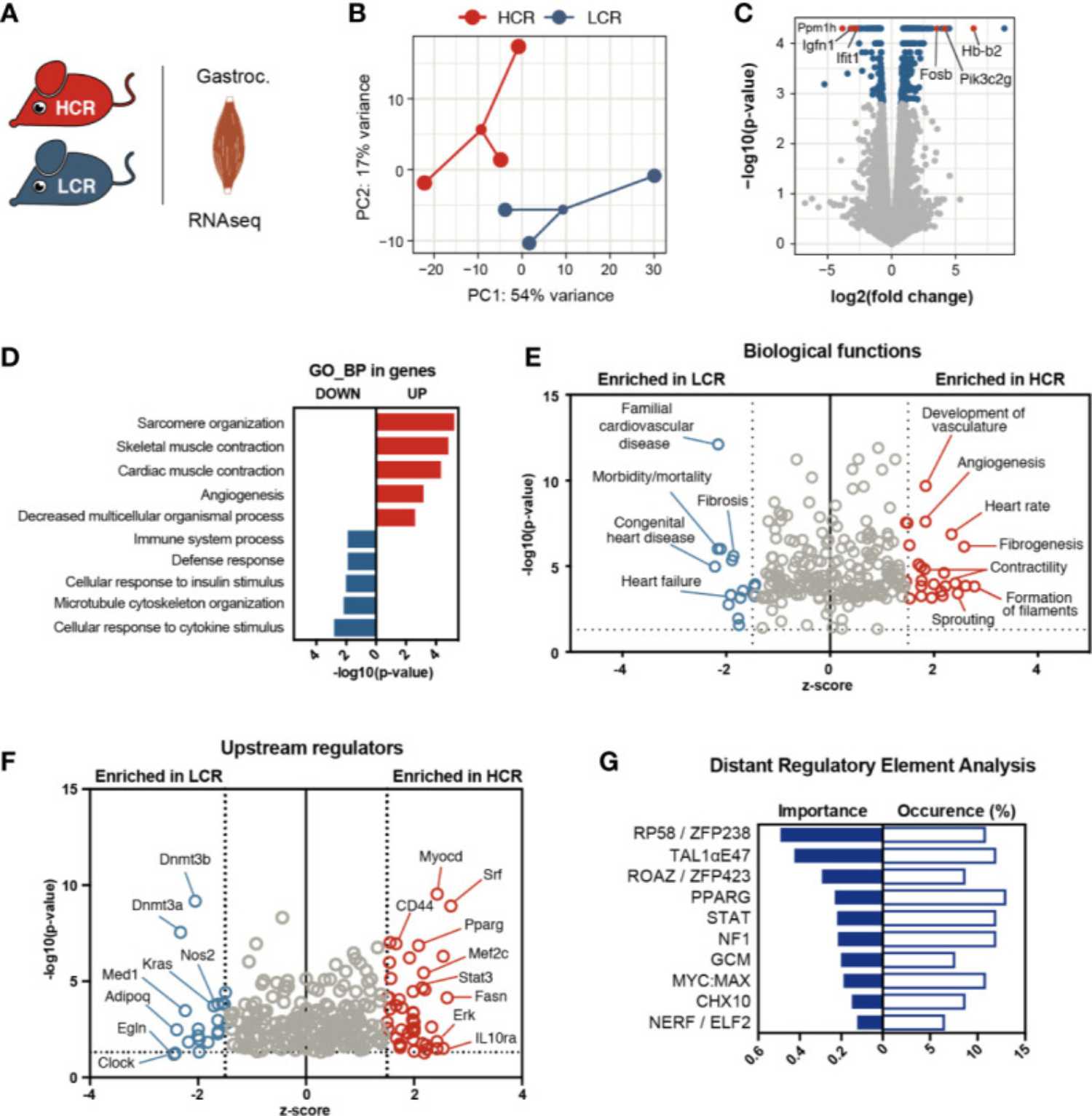Exploring the inherent and adaptive components of exercise capacity

Increasing exercise capacity promotes healthy aging and is strongly associated with lower mortality rates. In this study, we analyzed skeletal muscle transcriptomics coupled to exercise performance in humans and rats to dissect the inherent and response components of aerobic exercise capacity. Using rat models selected for intrinsic and acquired aerobic capacity, we determined that the high aerobic capacity muscle transcriptome is associated with pathways for tissue oxygenation and vascularization. Conversely, the low capacity muscle transcriptome indicated immune response and metabolic dysfunction. Low response to training was associated with an inflammatory signature and revealed a potential link to circadian rhythm. Next, we applied bioinformatics tools to predict potential secreted factors (myokines). The predicted secretome profile for exercise capacity highlighted circulatory factors involved in lipid metabolism and the exercise response secretome was associated with extracellular matrix remodelling. Lastly, we utilized human muscle mitochondrial respiration and transcriptomics data to explore molecular mediators of exercise capacity and response across species. Human transcriptome comparison highlighted epigenetic mechanisms linked to exercise capacity and the damage repair for response. Overall, our findings from this cross-species transcriptome analysis of exercise capacity and response establish a foundation for future studies on the mechanisms that link exercise and health.
Comparative Analysis of Skeletal Muscle Transcriptional Signatures Associated With Aerobic Exercise Capacity or Response to Training in Humans and Rats
Kelahmetoglu Y, Jannig PR, Cervenka I, Koch LG, Britton SL, Zhou J, Wang H, Robinson MM, Nair KS, Ruas JL
Front Endocrinol (Lausanne). 2020 Oct 26;11:591476



